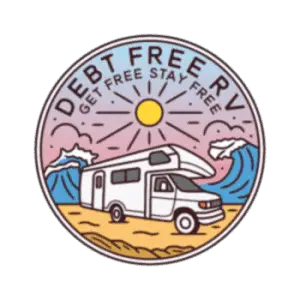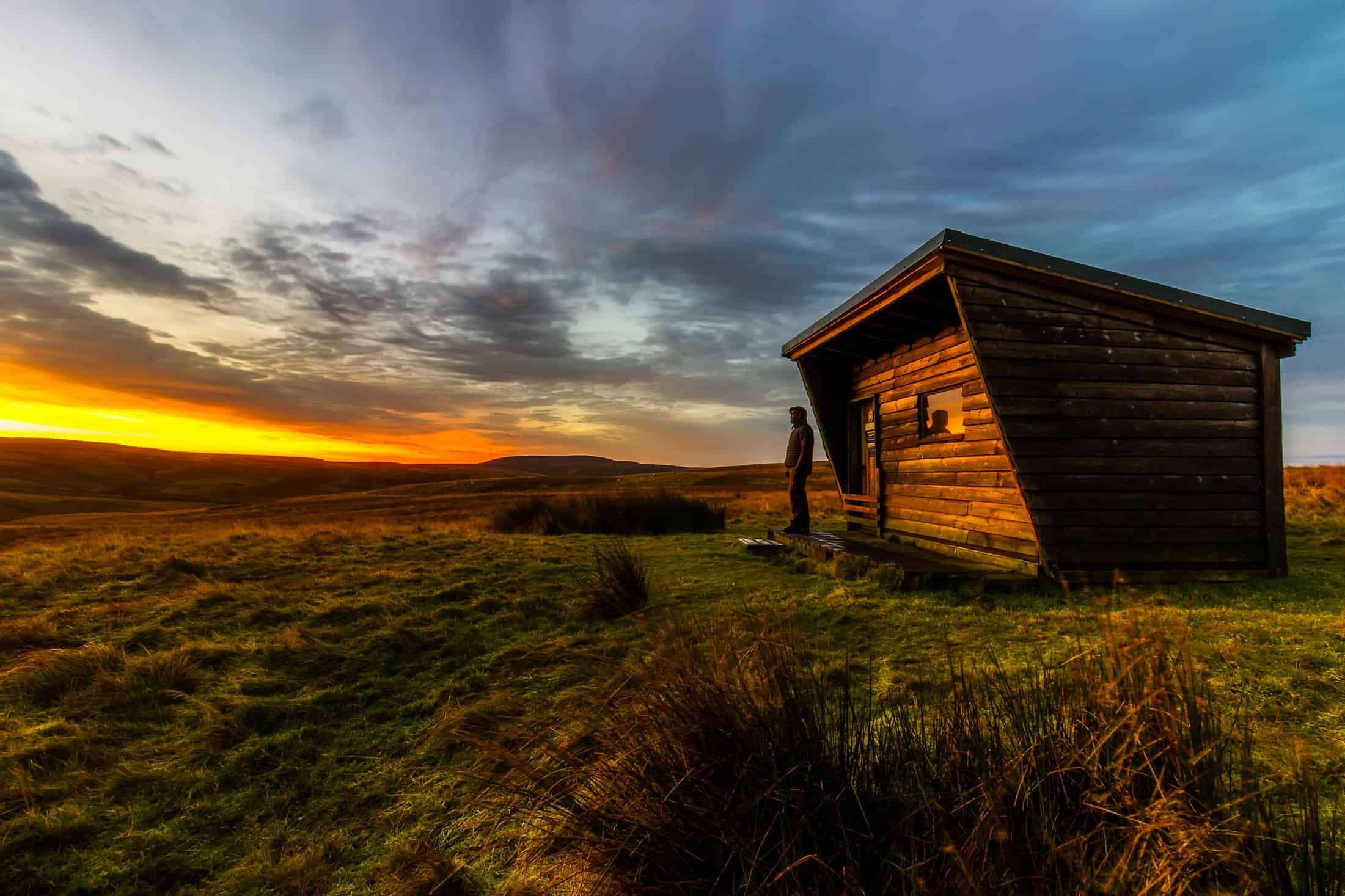Downsizing from a standard house or apartment has increased in popularity over the years. McMansions are losing their appeal due to: High mortgages, rent that increases annually, unused space, and wasted time cleaning. What once was the goal is now, for many, an albatross. For those contemplating a smaller life, one frequently asked question is: Are tiny houses better than RVs? Which is the better option?
Tiny houses are better than RVs if you plan on setting down roots in one location. However, if you want to travel often, live off grid, and have the ability to remain mobile, RVs are the better option between the two.
Looking at the Specs
When researching tiny houses and mobile homes, you’ll soon learn that “tiny living” is a subjective term for minimalist living. Some of the structures offered are light and travel-efficient, while others are more comparable to grounded, permanent buildings.
Tiny House
The tiny house community is not a monolith. Sizes of these homes range from 60 sq ft to 750 sq ft.
If you want your tiny house to be set on wheels, the maximum size able to be pulled on most US highways is 13.5 ft tall by 8.5 ft wide and 40 ft long. Zoning requirements vary from state to state, so it’s recommended to check with your local government to ensure that your planned tiny house is highway legal.
As far as weight, there is no standard weight for tiny houses. However, they typically weight much more than a traditional travel trailer. After all, travel trailers are designed with aerodynamic and lightweight qualities in mind. Tiny houses, in contrast, use building materials which are heavy, weighing down the trailer’s structure.
RV
Just as tiny houses are not uniform in size, the same is true for RVs. There are three major categories of RVs: Class A, Class B, and Class C.
- Class A: Size varies from model to model, but the average Class A motorhome is about 33 ft long, 12-13 ft tall, and 9 ft wide. The average weight is 30,000 to 33,000 lbs.
- Class B: It’s easy to assume from its name that Class B is the second largest motorhome, making Class C the smallest. However, the opposite is true. Class B is the smallest sized RV. On average, Class B’s measure 20 ft long, 8-9 ft wide, and 7-9 ft tall. The average weight is 10,000 to 20,000 lbs. They are light enough to be driven without a special license, and some make the Class B their daily commuting vehicle.
- Class C: A Class C motorhome is medium-sized and comsidered a compromise between the Class A and Class B. The average size is 28 ft long, 9 ft wide, and 10 ft tall. Technically, you can drive this class without a special license. However, getting a certification is recommended is you plan to add more load weight.
For a full rundown of these classes (and more!), check out our post on “What Kind of RV Should I Buy?”
Design Versatility
Every homeowner has different needs in terms of functionality and design. Tiny houses excel in design versatility, meeting a more comprehensive range of layout styles. RVs, on the other hand, provide more mobility at the expense of design versatility.
Tiny House
Tiny houses are known for their often exquisite designs. Building from the ground up means the layout possibilities are truly limitless.
Designs for tiny houses are made to suit the locations in which they’re built; Tiny homes are highly versatile and allow for creativity in design.

Another significant benefit of tiny houses is the accessibility they can provide. With proper considerations, you can design these homes to fit any family needs.
A trailblazer of accessibility is FabCab, a company dedicated to making homes that accommodate all ages, including the elderly as well as those with disabilities. For example, FabCab’s TimberCab model includes wheelchair accessible sliding doors and open-spaced bathrooms with same-level walk-in showers.
RV
RVs are notorious for being unoriginal in terms of design. Gone With the Wynns examined four Class A motorhome layouts. They concluded the plans would be unrecognizable from each other if you removed the manufacturer information!
The publication notes that most Class A motorhomes fall into the “traditional” category of interior design, characterized by these traits:
- Design emphasizes floral patterns
- Fabric colors and patterns are typically bland and understated
- Heavy use of soft and curvy edges
- Furniture is lacks uniqueness
- Furniture fixtures designed in pairs, and highly uniform
Traditional RV designs, although livable and compact, remain banal and boring.
Mobility
How much mobility do you need? Do you plan on waking up every morning in a new town? Or, are you envisioning a simple life in a quiet area in a permanent house? Tiny houses, while still less common, are made for homemakers. RVs, however, cater more to those hearing the call of the open road.
Tiny House
Tiny houses are tiny homes. They suit people looking to stay for extended periods of time. Tiny houses are built heavier than mobile homes, and are more customizable, and often featuring more utilities. While it is possible to tow a tiny house, there are considerations to take into account.
Moving into a tiny house is like moving into a new, traditional home: Scout out the neighborhood, and make sure there’s electric/solar power access, reliable internet, water, and any other utilities you plan on relying.
Additionally, your house must meet road specifications, and if it is too heavy, you’ll need a special license. You’ll also need to research what towing equipment is necessary to move a tiny home.
RV
RVs are meant for the open road. While their designs come short in regards to originality, their lighter, malleable design makes them suited for moving from place to place. Plus, since they are vehicles, they already meet road regulations. While larger homes may need towing, drivers can operate smaller models like a Class B. When it comes to mobility, RVs beat tiny houses, hands down.
Parking Issues
Tiny House
Planting roots in a tiny house is more complicated than you might think. These structures are classified differently depending on the local government. Additionally, tiny homes are subject to the building codes and tax laws of the area. Lastly, tiny houses still carry a stigma in many locations, and they often are associated with trailer park structures. These are very real obstacles to living in a tiny home.
If you’re planning on buying land on which to build a tiny house, know that it’s a highly bureaucratic process with a ton of research required, and a few hurdles to jump through. Check out our helpful guide on buying land to get a sense of what’s required.
RV
RVs are easier than tiny houses to park, however, depending on your lifestyle, you still can run in to difficulties.

If you’re planning on staying in RV parks, there are plenty of options available from state to state, although their quality varies significantly. RV parks always have rules about parking, maximum stay length, among others. Here are some common problems RVers face when parking in an RV park:
- Overcrowding in the park: Not enough space between other RVs
- Rude RV park owners and staff
- Bad electrical hookup
- Water supply is unhygienic and sometimes toxic
- Restroom and showers may be unsanitary
- Parked next to bad neighbors
- Some sites lack enough flat-level parking
The best solution to avoid these situations is to do your due diligence and research the RV parks before you begin your trip.
Average Costs
Tiny House
On average, tiny houses cost between $30,000 to $60,000 to build. However, the cost can drop to as little as $8,000 and go well above $150,000. These costs depend on building materials, amenities, and appliances.
If you plan to build a tiny house yourself without a contractor’s help, you’ll pay extra to fix any mistake you make in the process. Additionally, your tiny house is subject to zoning and tax laws, including fees to register your house as a residence. All of these expenses add up quickly!
RV
RVs cost anywhere from $10,000 to $300,000. Prices are determined by:
- Manufacturer’s reputation
- Size
- Age of RV
- Vehicle’s availability / popularity
- The floorplan
- Amenities and appliances
Used RVs are ubiquitous, and many are priced under $10,000. We purchased our 1992 Cobra Passport for $8,000; Well-maintained, and rarely driven, it was a great price. But if you’re looking for a newer model, know you’ll be paying tens of thousands of dollars.
Depreciation
Tiny House
Tiny homes usually do not fare well in the housing market. Instead of appreciating, expect your home to depreciate. There are a few reasons why this is the case. First, if a tiny house is custom-built, it will be less accessible to another owner with different needs, making it less desirable.
Additionally, tiny houses are a niche market, and there is less demand for them than traditional homes. So, if you plan on living in a tiny home, plan on staying for the long-term, or prepare to take a big hit to your pocketbook.
RV
RVs heavily depreciate from the time they drive off the lot, but level off after five years. Fellow RV enthusiasts at Camper Report recommend buying five year old RVs with minimum usage.
Compared to standard cars, whose depreciation gets determined by mileage, RVs depreciate with age since most malfunction due to issues unrelated to driving. This unique characteristic makes used RVs a wiser purchase than a new model.
RV depreciation is not subject to Class: Class A, B, and C mobile homes all depreciate at similar values.
Final Thoughts
Tiny homes and RVs are similar in many ways: Minimalist lifestyle, smaller living quarters, appliances and amenities used.
The greatest difference between the two is the owner’s desire for mobility, or the preference to put down roots in a more permanent dwelling.
Unlike traditional homes, tiny houses- regardless of how unique or beautifully constructed- depreciate in value. RVs, in contrast, make up for their banal design with higher mobility and better resale values.

